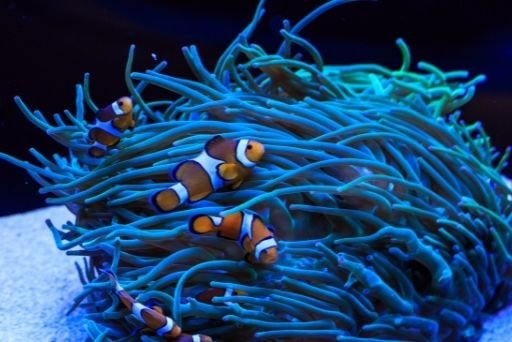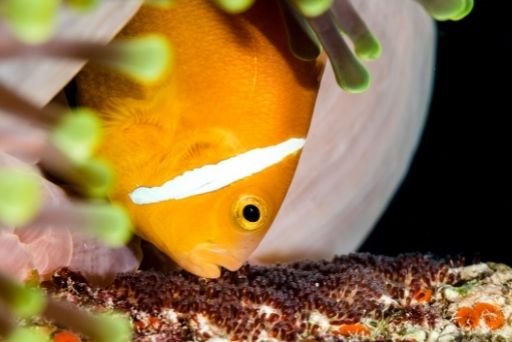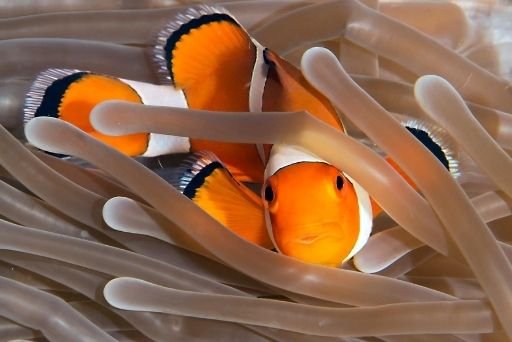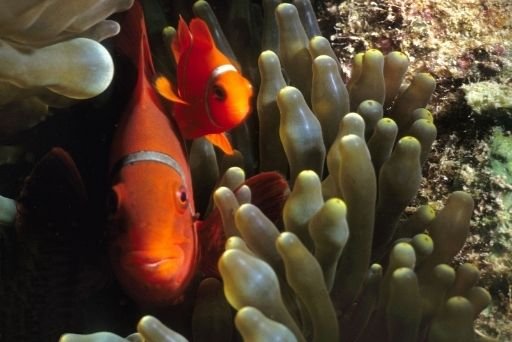Clownfish (family Amphiprioninae): Habitat, facts, diet and more
Fishes are the favourite species of all marine lovers. If you are one of them, you must have heard about Clownfish. They belong to the subfamily Amphiprioninae, specifically from the Chordata phylum and Actinopterygii class. They are amazingly beautiful with the most distinctive traits. The subfamily of Clownfish is made up of 28 different species.
Physical description of Clownfish
The body of the Clownfish is perch-like, and they are oval-shaped with interrupted lateral lines. Their body is laterally compressed. They also have a bright colouration of orange with three white stripes. The middle portion of the body bulges centrally forward.
Thick bands of black colour are seen around the white stripes, which separate the body’s orange and white colours. These bands vary from thick lines to patches of black on either side of the fish’s body. Moreover, they have fins with black colour tips. The size of these fishes ranges from 8 cm to 11 cm in length.



Habitat of theClownfish
Clownfish are mostly found in coastal seaward reefs and shallow sheltered lagoons. The depth of these lagoons ranges from 3.3 ft to 39.9 ft. Clownfish have three Anemone hosts who are dependent on them. These Anemones are outer reefs: magnificent Anemone, leathery Anemone and onshore reefs: giant carpet Anemones.
Behaviour and temperament of Clownfish
These fish species are found as single, a couple, and small groups. They hardly move more than 30 cm from the protection of their host anemone. Clownfish are terrestrial and aggressive, and they defend their host and the areas around it. The aggressive behaviour of the Clownfish includes beating its tail, chasing, biting the intruder’s head, abdomen and fins.
Furthermore, this fish aerates the surrounding water of their host anemone and helps remove the waste from its oral disc. Clownfish even provide nitrogenous waste, which the host Anemone uses as its food. It is popularly believed that the Clownfish grabs food for the Anemone. However, it is a typical myth as the Clownfish does not capture food.

Diet of Clownfish
The Clownfish are carnivorous omnivores. They feed on zooplankton like Copepods and Tunicate Larvae. Their diet also includes a portion of Algae. Sometimes, Clownfish also feed on undigested foods from their host Anemones. They even eat meat and plants. They are one of those fish species which are famous as non-fussy eaters. Apart from this, they can even be fed with frozen food as a staple and use dry foods to supplement.
Breeding of Clownfish
The courtship of the Clownfish starts 3 to 5 days before spawning. The period of courtship includes biting of rocks and corals, an extension of fins and chasing. When spawning near, the female Clownfish helps clean debris and Algae. While swimming with her belly, she brushes against the spawning site. While this movement occurs, the female Clownfish releases eggs with the help of her pectoral fins.
The male Clownfish swims behind the female Clownfish and fertilizes the eggs. It is generally seen that older female Clownfish lay more eggs than the younger ones. The colour of the eggs at their initial stage is pink and orange in colour, and with time this colour gradually changes to dull grey or brown. Before the egg hatches, it turns silver.
Adaptation of Clownfish
The Clownfish has a mucus layer covering, protecting the stinging anemone cells. The anemone does not recognize the fish due to this chemical composition. The juvenile Clownfish can navigate the same host anemones preferred by their parents. They can do this due to an olfactory stimulus imprinted at the time of egg incubation. This imprinting occurs because of exposure to the smell of the mucus of the host species.




Facts about Clownfish
- The Clownfish prefers to stay in warm waters.
- They even migrate to deeper water to stay warm.
- The female clownfish is considered to be the most aggressive one.
- All the Clownfish are born male. When the female dies, the dominant male becomes the female dominant one.
- The swimming pattern of this fish is very erratic. They are not great swimmers.
- The Clownfish does not move around in the deep waters. They stay inclined towards the host anemone and help protect them from the intruders.
- Moreover, they are considered to be very dedicated fathers. They guard their eggs and also clean the nest.
The bottom line
The Clownfish are hermaphrodites. In simple words, they can be both male and female. This fish species has a distinctive ability to change into a female. However, once they change, they cannot return. As such, they also have a symbiotic relationship with the sea Anemones.
These Anemones provide shelter to the Clownfish from predators, and the Clownfish drives away intruders. The lifespan of this fish is 3 to 6 years, and their body reaches up to 11 cm long on average. If you are a marine ecosystem lover, make sure to explore more about these amazing fish species.




